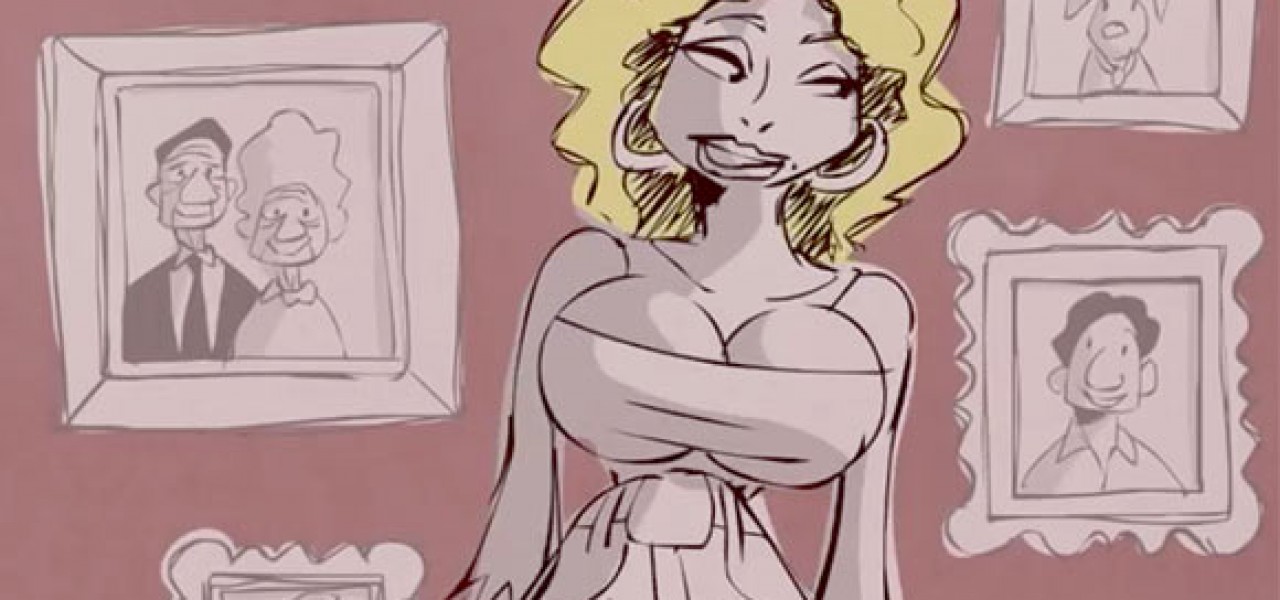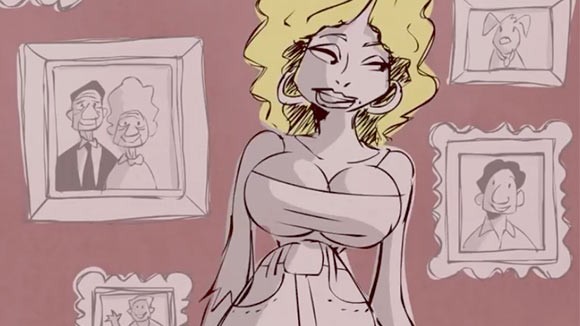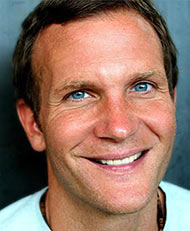

How to Produce A One-Man Web Series: Pat Smith on Making ‘Blank on Blank’
Almost singlehandedly, Patrick Smith transforms previously unreleased interviews of well-known cultural figures into thought-provoking animation in the intriguing PBS digital series, Blank on Blank.
“We’ve done forty episodes now, which is 160 minutes of animation,” Smith recently told Cartoon Brew. “I never thought that would be possible for my little set-up, but working in a limited style and having creative control speeds things up, allowing each episode to be finished in a week.”
The game-changer for Smith, who made his directorial debut at MTV Animation on series like Downtown and Daria before launching his own studio Blend Films, has been an acceptance and appreciation of the look of vector line over hand-drawing on paper. Flash, he explained, does wonders for quick drawing and simple exporting.
“Those sliced lines and flat colors look great; crude and oddly carved vector lines can have appeal,” said the Long Island, New York-based animator, who has also created a prolific body of work as an independent filmmaker. “I don’t mind the digital look. I would rather it look like vector than look like it’s trying to be something it’s not. As long as it doesn’t move digitally, I’m ok with it.”

Blank on Blank came to life after a friend of Smith’s put him in contact with TV news producer and journalist David Gerlach, who had access to a large library of audio files. The two clicked and began work, although they lacked substantial funding on the early series of episodes, which Smith admits were probably produced too quickly — “sometimes in a day or two,” he said. But as the series grew in popularity, its budget also increased, giving Smith more time to help his work stand out from the crowd.
“Interview-based animation is an overdone concept — and there’s just so much crap out there,” he said. “I wanted to do something that looked different from all the others, something hand drawn with symbolic graphic imagery that was thought-provoking.”
Although Smith’s work is produced under the Blend Films banner, it’s largely a one-man operation. He prefers to go it alone, if only to stay in the business of going anywhere.
“Studio overhead can bankrupt an indie like me,” Smith explained. “Every assistant you have is like another mortgage, and you really have to be careful that you’re not just hiring someone out of laziness, because building and maintaining a studio can be a distraction from being an animator and getting work done. The biggest strength indie animators have is that we can do every aspect of production. Working solo isn’t ideal, but building a team is a big-budget luxury.”
Smith’s purposefully solo production process begins once he receives locked recordings from Blank On Blank producer and audio editor, Amy Drozdowska, who tries to make the audio files as visual as possible by retaining pauses and breaks in conversation. His most common request is that there is enough space to work with, which he feels makes his animation more relatable to the audience.
“My dream is to have someone’s chair fall over or something during an interview,” he said. “One of my films had its subject, an ex-con, keep hitting his big ring against the chair while he spoke. Those are the details that make people human.”
Smith begins his animation process by sketching in the margins of the interview transcripts, although he shies away from literal translations, instead favoring more symbolic representations of what is being said. After that, he builds a quick animatic in Flash, using simple and flat shots that are easier to draw, mostly to stay on schedule. Then he hones the unfinished project over a Skype call with producers and occasionally PBS itself, although the final product, and its schedule, is his call to make.
“At the end of the day, it’s up to me and what I can get done in a week,” Smith explained. “Some episodes come together easier than others.”
Earlier episodes of Blank On Blank featured basic iconic representations of its subjects, while more recent installments have tended toward more recognizable illustrations. This representational style has Smith searching for distinctive characteristics that he can use to anchor his subjects and animations in reality.
“I’ve never been any good at caricatures, I just do my best and make sure they’re easy to draw,” he said. “I typically rely on one or two attributes, and then make up the rest. For Philip Seymour Hoffman, it was his large forehead and stringy parted hair. Bette Davis had large, heavy eyes. Johnny Cash had a layered jaw, like six jaws on top of each other, because he had major jaw problems all his life so they were always swollen. Lou Reed had a wrinkly upper lip and a leather jacket.”
“The most difficult to draw was Michael Jackson, because the interview was conducted when he was young, so I couldn’t use any of the typical alien Jackson features because he looked so normal young,” Smith added. “But in general, it’s good to keep the actual subject to a minimum in the piece, because it can get tiresome to look at a caricature talking.”
To see more episodes in the series, visit BlankonBlank.org.

.png)